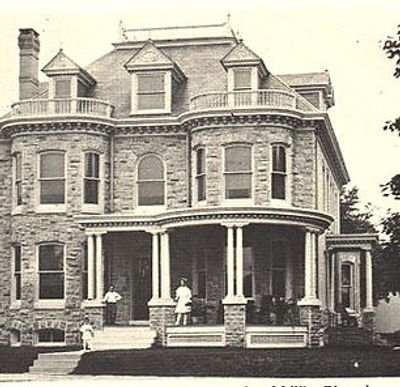
Boyertown’s prosperous beginnings started long before its incorporation in 1866. As German immigrants established themselves in the Oley Valley, English settlers, particularly Thomas Rutter and the Potts family, were drawn to the land of the Lenape people due to the rich concentration of iron ore below its surface. Through the 18th century, the tract of land boomed into Colebrookdale Township, including prosperous iron mines, the Colebrookdale Furnace (the first pig-iron producing furnace of Pennsylvania), and the ironmaster’s home – Popodickon Mansion – named for the native chief. Furnaces, forges, bloomeries, and mills dotted the landscape of Berks County providing rails, stoves, tools and machinery, axles, tire rims, and beyond. The Colebrookdale Furnace has a PA Historic Marker on South Reading Avenue, near Farmington Avenue.
The closure of the Colebrookdale Furnace rerouted the original major crossroads- leading from Kutztown to Philadelphia and from Allentown to Pottstown - to the Mennonite Meetinghouse (the site of Truist Bank today), the heart of town. It was here, at the turn of the century, that the Boyer family began to harness the other three corners of the crossroads adjacent to the Meetinghouse- building stores, hotels, and managing the post office. Local farmers could come to church, socialize, and buy supplies, while visitors could arrive by stagecoach to frequent the hotels and taverns. Stand at the corner of Philadelphia and Reading Avenues and experience ‘Boyer’s Corner’. The buildings of the Boyertown Inn, the Medicine Shoppe, and Building a Better Boyertown’s office all once belonged to ‘Danny Boyer’!
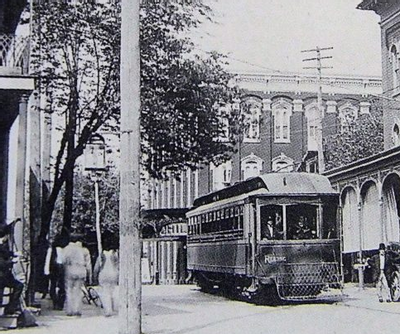
Attractive Ore
Magnetite in the Boyertown Area mining district was of particular interest to scientist Thomas Edison, who experimented with more efficient and cost-effective methods of extracting the ore in the late 1800’s. Though Edison’s Bechtelsville Mill experiment only lasted 2 years, his work is a testament to the area’s ‘magnetism’. Iron Mining in Boyertown is a permanent exhibit at the Boyertown Area Historical Society.
Waves of Progress
Mining and manufacturing continued to grow throughout the 19th century and beyond the Civil War. In 1865 the Colebrookdale Railroad was incorporated and began service in September of 1869 from the Philadelphia and Reading Railroad line at Pottstown through Pine Forge, Colebrookdale, and Boyertown to Barto. The fare was only 30 cents! The rail spur connected Boyertown to major cities faster than ever before. Even as the iron industry began to wane, the cigar, carriage, and casket industries were able to provide the jobs and production to keep the town moving. Take a ride on the Colebrookdale Railroad in beautifully restored cars resembling the height of turn-of-the-century luxury. The Colebrookdale hosts many seasonal experiences such as Santa Claus and Easter Bunny trains, cocktail hour,s and more.
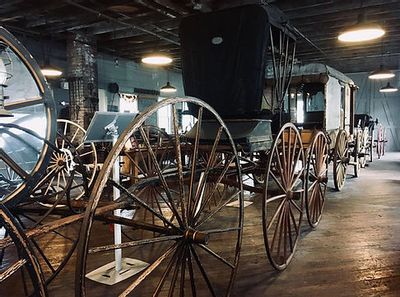
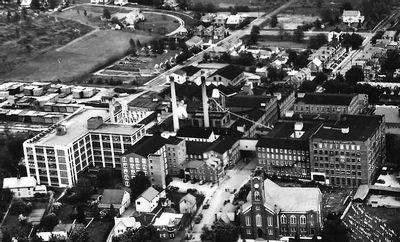

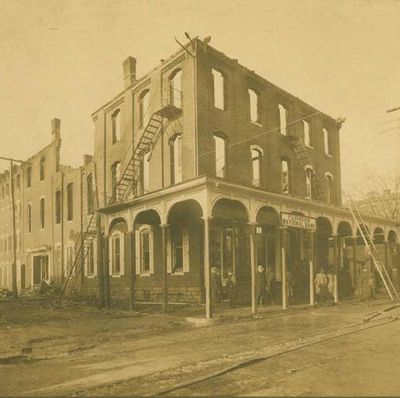
On the evening of January 13, 1908, nearly over 300 people crowded the Rhoads Opera House to see the performance of ‘The Scottish Reformation’. During intermission, the projectionist provided a “magic lantern” slide presentation. The projector apparatus used gas canisters, which emitted a hissing noise that startled the audience. To understand the source of the commotion, actors pulled aside a curtain on stage which tipped a kerosene lantern and ignited the curtain. The theatre was in a frenzy and the narrow walkways, inward opening doors, unmarked fire escapes with over three feet high windowsills and locked windows, along with the sheer amount of people, prevented many from evacuating the blaze. 171 people lost their lives, and their legacy lives on in many ways. You can visit the building that once held the Opera House, there is a dedication plaque on the wall, and our favorite used bookstore, The Book Nook resides on the first floor. You can also pay respects at the Tomb of the Unidentified in Fairview Cemetery – the Historical Society hosts an annual wreath laying.
This incident was the catalyst that pushed the PA Legislature into passing new fire safety standards for doors, landings, lighting and curtains, fire extinguishers, aisles, and marked exits. All doors are now required to open outward and remain unlocked. Governor Edwin Stewart signed PA’s first fire law on May 3rd, 1909. This legislation served as a model for other states to create fire standards in public buildings. The Rhoads Opera House Fire is a permanent exhibit at the Boyertown Area Historical Society.